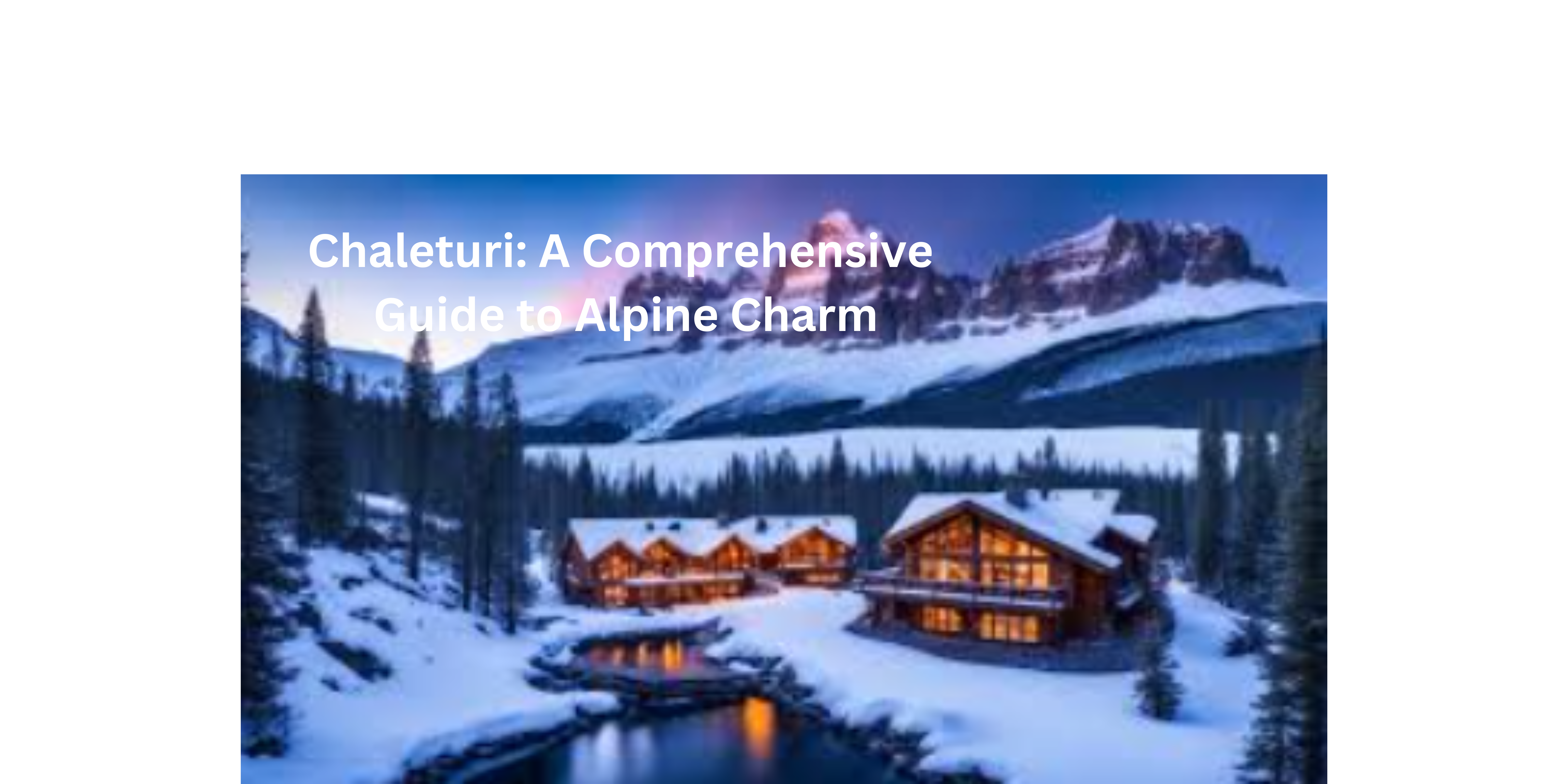Chaleturi, an architectural and cultural gem rooted in the Alpine regions of Europe, has become a symbol of rustic elegance and tranquility. Known for their wooden construction, heavy sloping roofs, and wide, overhanging eaves, have evolved from humble mountain shelters to luxurious retreats.
This article explores the history, architecture, modern applications, and cultural significance, while providing unique insights for readers in the USA who might be considering incorporating this style into their lifestyle or travels.
What Are Chaleturi?
They are traditional Alpine houses made primarily of wood, with distinctive architectural features designed to withstand harsh mountain climates.
These buildings originated in the Swiss Alps but have since spread globally, becoming synonymous with cozy, idyllic mountain living. The term “chaleturi” refers not only to the physical structure but also to the lifestyle they embody—one of simplicity, warmth, and a connection to nature.
Key Features:
- Wooden Construction: Typically constructed with natural timber, it exude a warm, rustic aesthetic.
- Sloping Roofs: Heavy, gently sloping roofs are designed to shed snow efficiently.
- Wide Eaves: Overhanging eaves provide protection from snow and rain while adding architectural character.
- Balconies and Verandas: Often adorned with intricate wood carvings, these spaces offer stunning mountain views.
- Stone Foundations: A sturdy stone base ensures stability and insulation.
The Origins:
The concept of chaleturi dates back centuries to the pastoral traditions of the Swiss Alps. Initially, these structures served as seasonal shelters for herders and their livestock. Over time, their utility evolved, and they became permanent homes and later, vacation retreats.
Transition from Function to Luxury
In the 19th century, as tourism flourished in the Alps, began to cater to affluent travelers seeking picturesque getaways. Wealthy Europeans transformed these functional homes into luxurious lodges, complete with modern amenities while retaining their rustic charm.
Modern: Blending Tradition with Innovation
Today have transcended their Alpine roots, inspiring architecture worldwide. Modern interpretations maintain traditional elements while integrating contemporary design and technology.
Chaleturi in the USA
In the United States, chaleturi-inspired homes have gained popularity in mountain regions like Colorado, Montana, and Vermont. These homes often combine traditional aesthetics with energy-efficient systems, open floor plans, and smart home technology.
Sustainable Chaleturi
Eco-conscious architects are reimagining using sustainable materials and green building practices. Solar panels, geothermal heating, and recycled wood are becoming common features, making chaleturi a sustainable choice for modern living.
Why Choose?
Whether for a primary residence, vacation home, or rental property, chaleturi offer numerous benefits:
- Aesthetic Appeal: Their timeless design blends seamlessly with natural surroundings.
- Durability: Built to withstand extreme weather,both sturdy and long-lasting.
- Cozy Ambiance: Their warm interiors create a welcoming atmosphere.
- Investment Value: Properties with chaleturi-style architecture often retain high market value due to their unique appeal.
Designing Your Own
For those inspired to create their own chaleturi, here are some essential tips:
Site Selection
- Choose a location that complements the natural aesthetics, such as wooded areas or mountainous terrains.
Materials
- Opt for high-quality wood like cedar or pine for a traditional look.
- Use stone for the foundation and chimneys to add durability and visual contrast.
Interior Design
- Focus on open layouts with high ceilings to emphasize space and light.
- Incorporate fireplaces and wood paneling for a cozy, rustic feel.
- Blend modern furniture with traditional décor elements like woven rugs and wooden accents.
Modern Amenities
- Consider energy-efficient windows, underfloor heating, and smart home systems to enhance comfort and reduce environmental impact.
Cultural Significance
Beyond their architectural beauty, chaleturi hold deep cultural significance in Alpine communities. They symbolize a way of life that values harmony with nature, craftsmanship, and community.
Festivals and Traditions
In many Alpine villages,play a central role in festivals and traditions, serving as gathering places for celebrations and storytelling.
Influence on Global Architecture
Chaleturi have influenced architectural styles worldwide, inspiring designs in ski resorts, lodges, and even urban homes.
FAQs
What distinguishes from other architectural styles?
Chaleturi are characterized by their wooden construction, sloping roofs, and wide eaves, which are designed to withstand Alpine climates. Their blend of functionality and rustic charm sets them apart from other styles.
Can chaleturi be built in warmer climates?
Yes, modern adaptations of chaleturi can be designed for various climates. Adjustments like insulating materials and ventilation systems make them suitable for warmer regions.
Are chaleturi energy-efficient?
Traditional chaleturi rely on natural insulation from wood and stone. Modern versions often incorporate advanced energy-efficient technologies like solar panels and triple-glazed windows.
How much does it cost to build?
Costs vary based on size, location, and materials. On average, constructing a custom chaleturi can range from $300,000 to over $1 million.
Where can I find in the USA?
Popular regions for chaleturi-inspired homes include the Rocky Mountains, Adirondacks, and Appalachian ranges.
Conclusion
Chaleturi are more than just buildings; they represent a lifestyle steeped in tradition, comfort, and natural beauty. From their humble origins in the Swiss Alps to their modern interpretations across the globe, continue to captivate and inspire.
Whether you’re planning a visit to an Alpine village or considering building your own, the timeless appeal makes them a worthy investment in both architecture and lifestyle.




